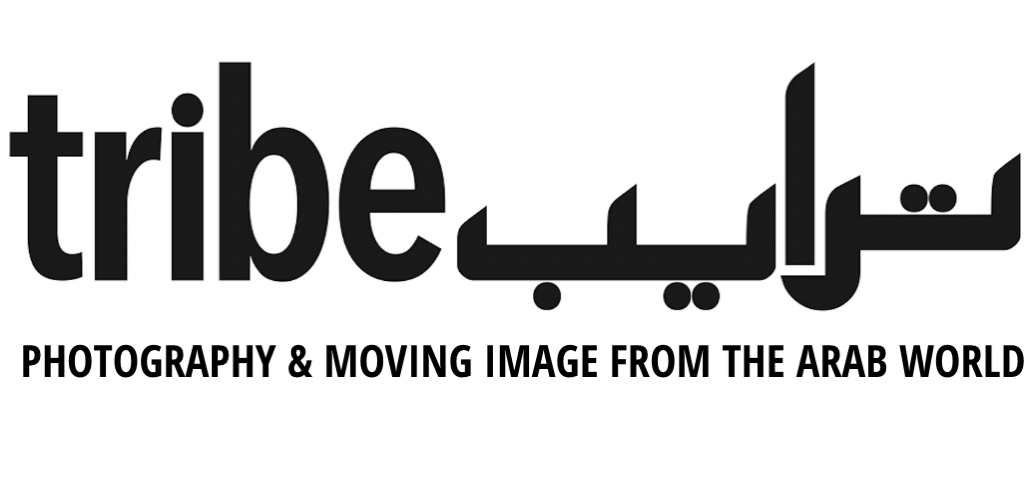Soliloquies in the Desert
By Tina Sherwell
Tarek Al-Ghoussein, Untitled 11 (C Series), (2007) Digital Print, 55 x 75 cm. All images courtesy of The Third Line, Dubai.
“While the work has been concerned with barriers, land, longing, and belonging, this most recent series departs from these defining/confining concepts and, instead, focuses on visualized ideas of transience… while unexpected, the strong emphasis on longing led to consideration of changing landscapes and ephemeral moments that are fixed in time rather than located in a specific place.
In Untitled 11 from the C series, we see the artist dragging what appears to be a gigantic sea blue tarpaulin in a desert landscape, somehow reminiscent of Sisyphus, who was forced to roll an immense boulder up a hill only for it to roll down every time it neared the top—an act he had to repeat for eternity, in an endless performance of endurance and futility. “If we look to the first meaning of longing as mentioned above as a starting point for this work, "yearning desire," we see that, according to the list of examples in the OED… we find: "Whence this pleasing hope, this fond desire, this longing after immortality?" As the artist suggests above, perhaps these concepts are in themselves confining in defining the ambiguities of our relationship to place over time.
The vastness and loneliness of the desert—a space in which there is no escape from the self—pervades this work, accentuated by the scale of the tarpaulin and the miniature scale of the artist himself. A small figure in this vast landscape continually manifests in Al-Ghoussein’s work, pointing to a larger question of our existence and our transient presence in place. Temporariness is visually underlined as it at once marks the horizon line, but is simultaneously being dragged behind the artist who wanders across the desert.
In further iterations of the series, the artist slowly disappears, first partially seen then engulfed by the tarpaulin. Even in their difference of scale, it is his human presence which anchors the blue sea of tarpaulin. When they depart from each other, it is left to the elements, torn, and scattered—temporal and fleeting, as in Untitled 4 (C series). Once immense and expansive, its fragments are now caught on a barrier and buried in the cold gray sands (Untitled 4b (C series). There is a continual haunting state of temporariness and separateness in these works, which raises the question of our relationship to the landscapes in which we find ourselves.
Untitled 5, from the D series, places us in a paradox. The figure proposes an in-between state—either half buried in or half emerging from the sands, seemingly confronted by both open and closed borders and barriers, demarcations that suggest an impossible and contradictory condition. Both a moment of disappearance and emergence, as Antony Downey comments, “I also think of mise en abyme, a term used when you face an abyss or are placed between two mirrors that refract reality into the distance…. when we are looking at these images there is a consistent questioning of the viewer’s position—a placing into an abyss of interpretation that questions any easy assertions or understanding of what it is we are looking at.”


